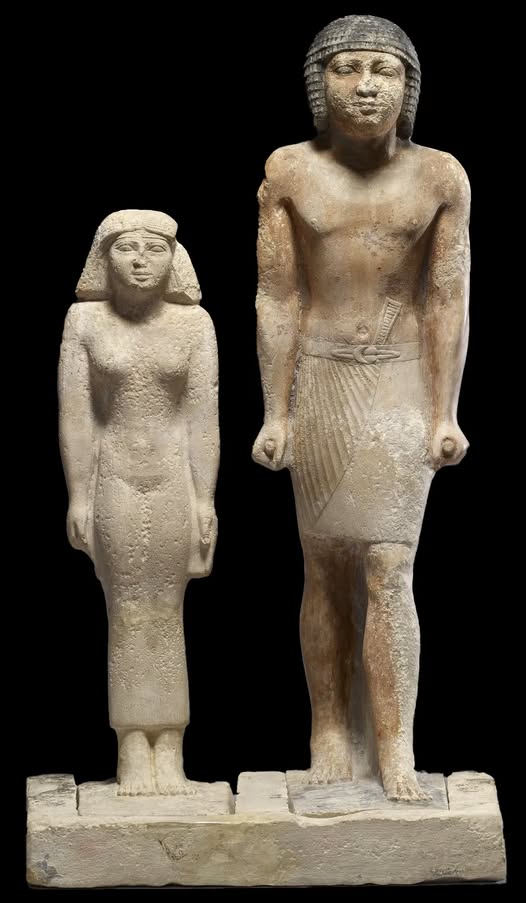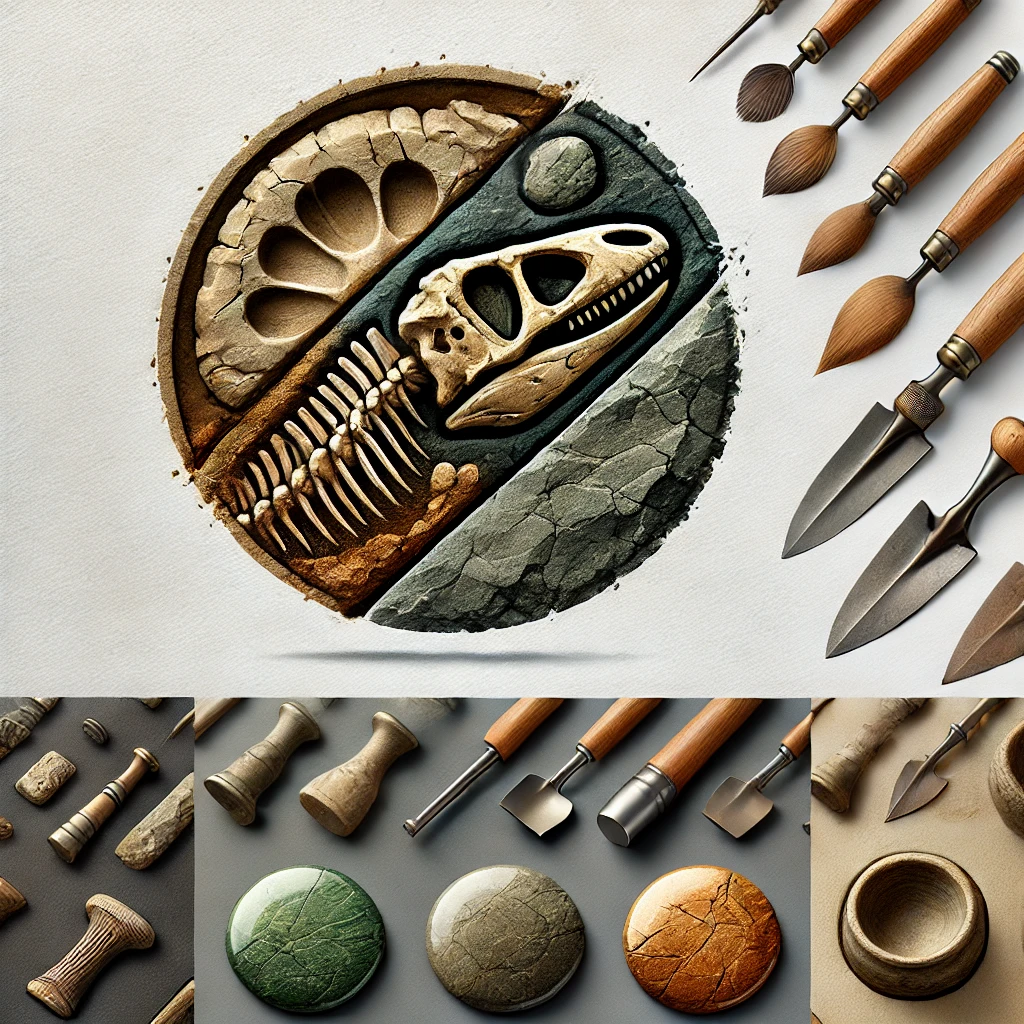The Double Statue of Nen-Kheft-Ka and Nefer-Shemes: A Glimpse into Ancient Egyptian Society
In the heart of Ancient Egypt, a limestone sculpture stands as a testament to the artistry and societal norms of the Old Kingdom. Dating back to around 2350 B.C., the double statue of Nen-Kheft-Ka, the mayor, and his wife, Nefer-Shemes, was uncovered at Deshasheh, an archaeological site nearly seventy miles south of modern-day Cairo. Carved during the late 5th Dynasty, this masterpiece offers us a window into the social and artistic conventions of the era.
The Artistic Representation of Power and Grace
Nen-Kheft-Ka: The Embodiment of Authority
Standing tall and confident, Nen-Kheft-Ka strides forward with his left foot, his arms held closely at his sides in a formal stance that signifies his power. This posture reflects the standard Egyptian artistic conventions for representing men, emphasizing strength and authority.
Nefer-Shemes: The Graceful Companion
In contrast, Nefer-Shemes is depicted on a slightly smaller scale, standing with her feet together in a gentle, reserved pose. Her depiction reflects the traditional roles of women in that time — secondary, yet honored. This artistic choice underscores the societal norms and the complementary roles of men and women in Ancient Egyptian society.
Originally carved separately, the figures were later modified to rest together on a shared base before their final resting place in the tomb. This alteration signifies the unity and partnership between Nen-Kheft-Ka and Nefer-Shemes, both in life and in the afterlife.
The Inscriptions: Echoes from the Past
Royal Acquaintance Titles
The inscriptions near their feet identify them as “Royal Acquaintance, Nen-Kheft-Ka and Royal Acquaintance, Nefer-Shemes.” These titles suggest a close relationship with the royal family, indicating their esteemed status in society.
Cultural Significance of Inscriptions
In Ancient Egypt, inscriptions were not merely decorative; they served as a means to immortalize individuals and their achievements. The presence of these inscriptions on the statue underscores the importance of legacy and remembrance in Egyptian culture.
Preservation of Identity
The inscriptions also played a crucial role in preserving the identities of individuals for eternity. Even millennia later, they allow us to know the names and titles of Nen-Kheft-Ka and Nefer-Shemes, offering a direct connection to the past.
Discovery and Preservation: A Journey Through Time
The 1897 Excavation
In 1897, the renowned archaeologist Sir Flinders Petrie uncovered this remarkable artifact at Deshasheh. His meticulous excavation methods ensured the preservation of this statue, allowing it to be studied and appreciated by future generations.
Current Location: Walters Art Museum
Today, the double statue resides in the Walters Art Museum, carrying with it not just the weight of history but the quiet dignity of two individuals who lived long ago. Its presence in the museum allows visitors to engage with Ancient Egyptian art and culture firsthand.
Ongoing Research and Interpretation
Scholars continue to study the statue, delving into its artistic details and historical context. Each new discovery adds depth to our understanding of Ancient Egyptian society and the individuals who shaped its legacy.
Conclusion
The double statue of Nen-Kheft-Ka and Nefer-Shemes offers a profound insight into the social and artistic conventions of Ancient Egypt during the late 5th Dynasty. Through its depiction of power, grace, and unity, it reflects the values and beliefs of a civilization that continues to captivate and inspire. As we gaze upon this timeless masterpiece, we are reminded of the enduring human desire to be remembered and to honor those who came before us.

CÁC TIN KHÁC
Mary Walton: The Forgotten Inventor Who Helped Clean Up America’s Cities
Tomb of Queen Nefertari in the Valley of the Queens, Egypt
Discover the Hypostyle Hall of the Temple of Hathor at Dendera
Venus de Losange: Unveiling the Mystery of a 20,000-Year-Old Paleolithic Icon